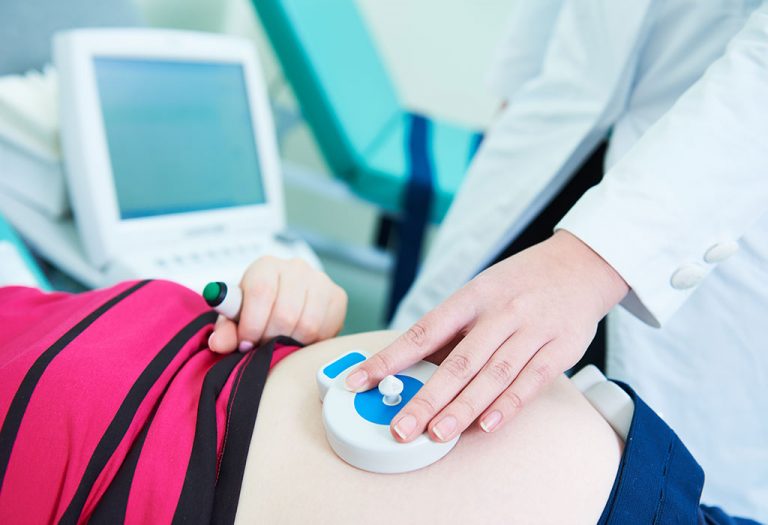Cervix & Cervical Position in Early Pregnancy

- What Is the Cervix and What Its Role?
- Cervix Position During Menstruation
- Cervix Position During Ovulation
- Cervix Position During Conception and Early Pregnancy
- Can the Cervix Position in Early Pregnancy Be Misleading?
- Why Is Checking the Position of the Cervix Useful?
- How To Check Your Cervical Position
- When Shouldn’t You Check the Position of Your Cervix?
- FAQs
The cervix is a tube-shaped organ that connects the uterus to the vagina. Sperm make their way down this passage to the cervical opening. Let’s look at how this delicate organ responds to pregnancy.
What Is the Cervix and What Its Role?
The uterus and vagina are connected by the cervix, which is the lowest, narrow portion of the uterus. It measures 3 to 4 centimetres in length. The cervix’s lining layer is home to glands that secrete hormone-dependent mucus. The mucus thins during ovulation, making it possible for sperm to reach the egg. The mucus thickens during pregnancy to shield the uterus from dangerous microorganisms. Early in pregnancy, the cervix’s location and texture, as well as the consistency and colour of the cervical discharge, alter.
Cervix Position During Menstruation
The cervix keeps changing its position throughout the menstruation cycle. When menstrual bleeding commences, it’s low, open and quite hard. Once a period is over, it remains low and hard until ovulation while the uterus’s opening remains closed.
Cervix Position During Ovulation
As you approach the ovulation phase, the cervix pushes itself up, grows softer and moistens. This happens so the sperm can easily access the uterus and the egg. The opening is so soft that it cannot be distinguished from the vaginal walls. Once ovulation is over, the cervix grows hard and closes the uterine opening again.
Cervix Position During Conception and Early Pregnancy
The ideal time for conception during ovulation is when the cervix is high, soft and open. Once you have conceived, early pregnancy will make your cervix high, soft and closed. Your mucus plug will prepare itself for pregnancy. Mucous is usually thin and colourless. When it starts becoming a plug, it grows thick and white. This stops anything from entering the uterus and protects you and your baby from infections. While some women feel this change in the early stages, others might experience it only in the later stages.
Can the Cervix Position in Early Pregnancy Be Misleading?
Yes. Your cervix could be in a typically pregnant position when you’re not, and vice versa. For some, the body takes a while to change with pregnancy. During the menstrual cycle, your cervix will be soft and positioned higher. But, it will not be as high or soft when pregnant. The cause of it being soft is because it is swollen with blood due to the increased amount of estrogen in your body. If your cervix doesn’t show the signs of pregnancy, give it some time and try checking with a doctor or a home pregnancy test. Your body is unique, and thus, this means of checking for pregnancy is not reliable.

Why Is Checking the Position of the Cervix Useful?
As we mentioned above, the cervix fills with mucus when pregnant. It also keeps changing its position from high to low and vice versa. So the position of your cervix and the amount of mucus around it can help determine if you’re carrying a tiny being.
How To Check Your Cervical Position
Your cervix is generally 3 to 6 inches in length and above your vagina. Here are some steps to check your cervix position after ovulation.
1. Wash Your Hands
Ensure your hands are clean to avoid transmitting bacteria to this sensitive area. The best time is after a shower.
2. Cut Your Fingernails
Long fingernails can cause injury.
3. Position Yourself
Squat and insert your middle finger into the vagina. You may have to go a few inches in to find your cervix.
4. Feel Around for an Opening
Use your finger to feel whether your cervix is open or closed.
5. Record Your Observations
Once done, you should record your observations in a journal or on a fertility app.
You can determine the position of your cervix based on how far you need to insert your finger.
When Shouldn’t You Check the Position of Your Cervix?
It’s prudent to refrain from checking your cervical position if:
- You have a urinary tract infection (UTI) or yeast infection.
- You’re pregnant, and your water has broken.
- You’ve just had sex.
Checking the position of the cervix isn’t a reliable method to check for pregnancy. Don’t be disappointed if your cervix hasn’t moved into a pregnancy position. It’s also possible to get a positive pregnancy result before the cervix moves into this position.
If you want a reliable answer, visit a gynaecologist or take a blood test.
FAQs
1. Can Your Cervix Be High and Hard in Early Pregnancy?
Your cervix will become high and soft in the early stages of pregnancy. This is one of the first events following fertilisation. Afterwards, your cervix will harden but remain high. The cervix will get softer as your pregnancy progresses, facilitating birthing.
2. How Does Your Cervix Feel in Early Pregnancy?
The cervix will continue to be higher if you’ve conceived. This feeling of the cervix is the second discernible change in the cervix. If you haven’t conceived, the cervical position during the cycle will feel stiff, like an unripened fruit. Conversely, your cervix will feel soft if you are pregnant.
3. How to Determine If Your Cervix Is Low or High?
By putting one or two fingers into the vagina and feeling for the cervix, you can determine if your cervix is high or low. Your cervix is low if your first knuckle can reach it. Your cervix is average height or high if you can reach it by or beyond the second knuckle of your finger.
4. How Can You Tell What Position Your Cervix Is In?
Reach within your vagina with your finger. Use your middle or index finger and slowly move it as far as you can in an upward motion. If you think of your vagina as a hallway, your cervix is the door at the end.
Also Read:
Cervical Length during Pregnancy
Cervical Incompetence during Pregnancy
Cervical Cancer during Pregnancy

















